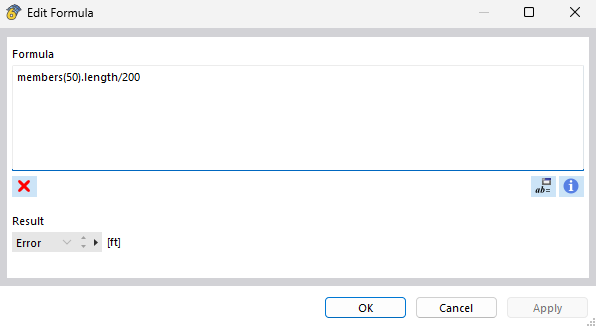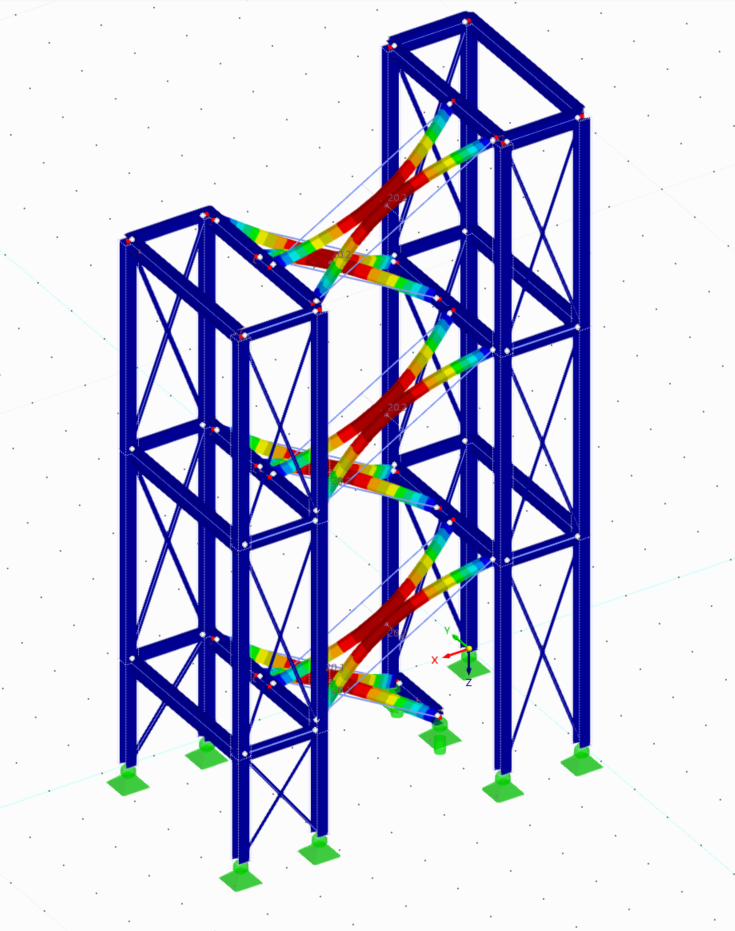In the case of this imperfection type, the imperfections are based on the deformations of a load case or a load combination.
In the "Static Deformation" tab, you can create a new load case using the
![]() button. To avoid considering this load case in the load combinations, you should define it without an action category.
button. To avoid considering this load case in the load combinations, you should define it without an action category.
It is also necessary to specify the scaling direction and an imperfection magnitude for this imperfection type. As an alternative to the measuring option in the graphics, the imperfection size can also be defined in a formula. For this, you need the number n of a member so you can access the length of the member with members[n].length.
In the load case created for the imperfection, you should now create a load that provides for the desired deformation. Use
![]() to apply a new member load. The specified load magnitude is not relevant, as the imperfection size is already defined by the formula and only the direction of the deformation is needed. Also, define a load direction and assign the load to the staircase strings using
to apply a new member load. The specified load magnitude is not relevant, as the imperfection size is already defined by the formula and only the direction of the deformation is needed. Also, define a load direction and assign the load to the staircase strings using
![]() .
.
If you calculate the load case belonging to the imperfection, you can see how the imperfections are aligned. It is also possible to calculate the imperfection case directly. Then, you will see the scaled result in the graphics.
This variant of applying an imperfection is well suited for applying different imperfections for a wide range of members. However, you have to assess yourself which are the most unfavorable imperfection directions.





